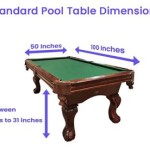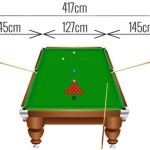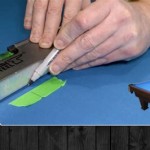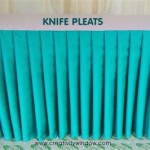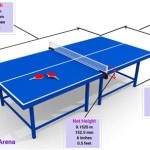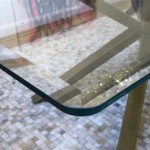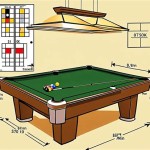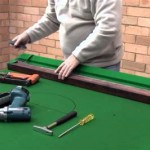The Enduring Appeal and Practicality of the Outdoor Wood Coffee Table
The outdoor wood coffee table stands as a versatile and enduring piece of furniture in patios, decks, and gardens across the globe. Its appeal stems from a combination of natural aesthetics, functional design, and the inherent durability of wood, making it a popular choice for enhancing outdoor living spaces. The selection and care of an outdoor wood coffee table requires understanding the various types of wood available, the potential environmental challenges, and the proper maintenance techniques to ensure longevity and continued beauty.
Outdoor living has become increasingly valued, transforming patios and decks from mere extensions of the house to fully realized recreational and relaxation areas. The furniture chosen to populate these spaces plays a pivotal role in shaping their character and functionality. In this context, the outdoor wood coffee table serves as a central gathering point, offering a surface for drinks, snacks, books, and decorative items. It facilitates conversation, relaxation, and the enjoyment of the outdoor environment.
The enduring popularity of wood as a material for outdoor furniture is rooted in its natural warmth and aesthetic versatility. Wood easily complements a variety of design styles, from rustic and traditional to contemporary and minimalist. Its organic texture and grain patterns add a touch of natural beauty to any outdoor setting, creating a welcoming and inviting atmosphere.
Understanding Wood Types for Outdoor Use
The selection of the appropriate wood species is paramount when choosing an outdoor coffee table. Different wood types possess varying degrees of resistance to moisture, insects, and decay. Choosing a suitable wood ensures the longevity and aesthetic appeal of the coffee table.
Teak: Teak is renowned for its exceptional durability and water resistance. Naturally rich in oils, teak withstands the elements without requiring extensive treatment. This inherent resistance to rot and insects makes it a premier choice for outdoor furniture. Its golden-brown hue weathers gracefully to a silver-gray patina over time, adding to its charm. However, teak can be a more expensive option compared to other wood types.
Cedar: Cedar is another popular option for outdoor furniture due to its natural resistance to decay and insects. It contains oils that act as a natural preservative, making it more durable than many other softwoods. Cedar also boasts a distinctive aroma that repels insects. While not as hard as teak, cedar is relatively lightweight and easy to work with. It's often more affordable than teak, making it a good choice for those seeking a balance between durability and cost.
Acacia: Acacia is a hardwood known for its strength, durability, and resistance to scratches. Its beautiful grain patterns and rich color variations make it an aesthetically pleasing option for outdoor furniture. Acacia is also relatively affordable compared to teak and some other hardwoods. However, it may require more maintenance than teak or cedar, as it can be susceptible to moisture damage if not properly sealed and treated.
Pressure-Treated Wood: Pressure-treated wood is typically softwood, such as pine, that has been chemically treated to resist decay and insects. This treatment makes it suitable for outdoor use, but it's important to note that the chemicals used in the treatment process can be harmful. It's crucial to choose pressure-treated wood that is approved for outdoor furniture and to follow the manufacturer's instructions for handling and disposal. Pressure-treated wood is often a more economical choice, but it may not have the same aesthetic appeal as natural hardwoods.
Eucalyptus: Eucalyptus is a fast-growing hardwood that is becoming increasingly popular for outdoor furniture. It is naturally water-resistant and durable, though not as resistant as teak. Eucalyptus is often more affordable than teak and features a reddish-brown hue. Regular oiling is recommended to maintain its color and prevent cracking.
When selecting a wood type, consider the local climate, the level of maintenance required, and the desired aesthetic. High-humidity environments may necessitate the use of more water-resistant woods like teak or cedar, while drier climates may allow for the use of other hardwoods with proper sealing and treatment.
Design Considerations and Functional Aspects
Beyond the choice of wood, the design of the outdoor coffee table plays a crucial role in its functionality and aesthetic integration into the outdoor space. Factors such as size, shape, style, and additional features should be carefully considered to ensure that the table meets the needs of the users and complements the overall design of the outdoor area.
Size and Shape: The size of the coffee table should be proportionate to the size of the seating area. A small coffee table may be appropriate for a cozy balcony, while a larger table may be needed for a spacious patio. The shape of the table can also influence the flow of the space. Rectangular coffee tables are a classic choice and work well with linear seating arrangements. Round or oval coffee tables can soften the lines of a space and promote conversation. Square coffee tables can offer a more contemporary look and provide ample surface area.
Style: The style of the coffee table should complement the overall design aesthetic of the outdoor space. Rustic coffee tables made from reclaimed wood can add a touch of natural charm to a country-style patio. Sleek, modern coffee tables with clean lines and minimalist designs can enhance a contemporary outdoor setting. Traditional coffee tables with ornate carvings and classic details can add a touch of elegance to a formal garden. Consider the existing furniture, landscaping, and architectural elements when selecting a style for the coffee table.
Additional Features: Some outdoor coffee tables come with additional features that enhance their functionality. Storage shelves or drawers can provide a convenient place to store blankets, magazines, or outdoor games. Lift-top coffee tables can be raised to create a comfortable surface for dining or working outdoors. Built-in ice buckets can keep drinks cold on hot days. Consider how the coffee table will be used and choose features that will enhance its utility.
Height: The height of the coffee table should be appropriate for the height of the seating. A coffee table that is too high or too low can be uncomfortable to use. Typically, a coffee table should be about the same height as the seat cushions of the surrounding chairs or sofas.
Weight and Portability: Consider the weight of the coffee table and whether it needs to be easily moved. If the table will be frequently relocated for cleaning or storage, a lighter-weight option may be preferable. Some coffee tables come with wheels or casters for added mobility.
The design of the outdoor wood coffee table should seamlessly integrate with the surrounding environment and enhance the overall functionality and aesthetic appeal of the outdoor space. Careful consideration of size, shape, style, and additional features is essential for selecting a coffee table that will provide years of enjoyment.
Maintaining Your Outdoor Wood Coffee Table
Proper maintenance is essential for preserving the beauty and extending the life of an outdoor wood coffee table. The specific maintenance requirements will vary depending on the type of wood and the environmental conditions. Regular cleaning, sealing, and protective measures can help prevent damage from moisture, sunlight, and pests.
Regular Cleaning: Regularly clean the coffee table to remove dirt, dust, and debris. Use a soft brush or cloth and a mild soap solution. Avoid using harsh chemicals or abrasive cleaners, as these can damage the wood finish. Rinse thoroughly with clean water and allow the table to dry completely before applying any protective treatments.
Sealing and Staining: Applying a sealant or stain can help protect the wood from moisture and UV damage. Choose a sealant or stain that is specifically designed for outdoor use and that is compatible with the type of wood. Follow the manufacturer's instructions for application. Reapply the sealant or stain every year or two, or as needed, to maintain the protective barrier.
Oiling: Some wood types, such as teak and eucalyptus, benefit from regular oiling. Oiling helps to replenish the natural oils in the wood, preventing it from drying out and cracking. Use a high-quality teak oil or other suitable wood oil and apply it according to the manufacturer's instructions. Oiling should be done every few months or as needed to maintain the wood's moisture content and appearance.
Protective Covers: When not in use, cover the coffee table with a protective cover to shield it from the elements. A waterproof cover will protect the table from rain, snow, and sun, helping to prevent moisture damage and fading. Make sure the cover is breathable to allow for air circulation and prevent the buildup of mold and mildew.
Winter Storage: In colder climates, it's best to store the coffee table indoors during the winter months. Clean the table thoroughly, allow it to dry completely, and then store it in a dry, well-ventilated area. If indoor storage is not possible, cover the table with a waterproof cover and elevate it off the ground to prevent moisture damage.
Addressing Minor Damage: Small scratches and dents can often be repaired with wood filler or by gently sanding the affected area and applying a matching stain or sealant. For more significant damage, such as cracks or splits, consult a professional furniture repair specialist.
By implementing a regular maintenance routine, the outdoor wood coffee table can retain its beauty and functionality for years to come. Consistent care and attention will help prevent damage from the elements and ensure that the table continues to be a cherished centerpiece of the outdoor living space.
In conclusion, the outdoor wood coffee table serves as a valuable addition to any outdoor space, offering both practical functionality and aesthetic appeal. Its selection should be guided by the careful consideration of wood type, design elements, and the commitment to regular maintenance, ensuring its lasting contribution to outdoor living enjoyment.

Outdoor Teak Coffee Table Fiori Rectangular

Noble House Sedona 12 50 In Teak Brown Rectangular Wood Outdoor Coffee Table 67345 The Home Depot

Modern Teak Coffee Table Casita Rectangular

Segovia Light Brown Eucalyptus Outdoor Chow Coffee Table World Market

Outdoor Accent Coffee Tables Pottery Barn

Sherwod Acacia Wood Coffee Table Teak Christopher Knight Home Target

Noble House Sherwood 11 In Grey Rectangular Wood Outdoor Coffee Table 68661 The Home Depot

Ping For Outdoor Coffee Tables The New York Times

Volume Outdoor Square Storage Coffee Table 36 West Elm

Ethnicraft Quatro Outdoor Coffee Table Natural Teak Made In Design

